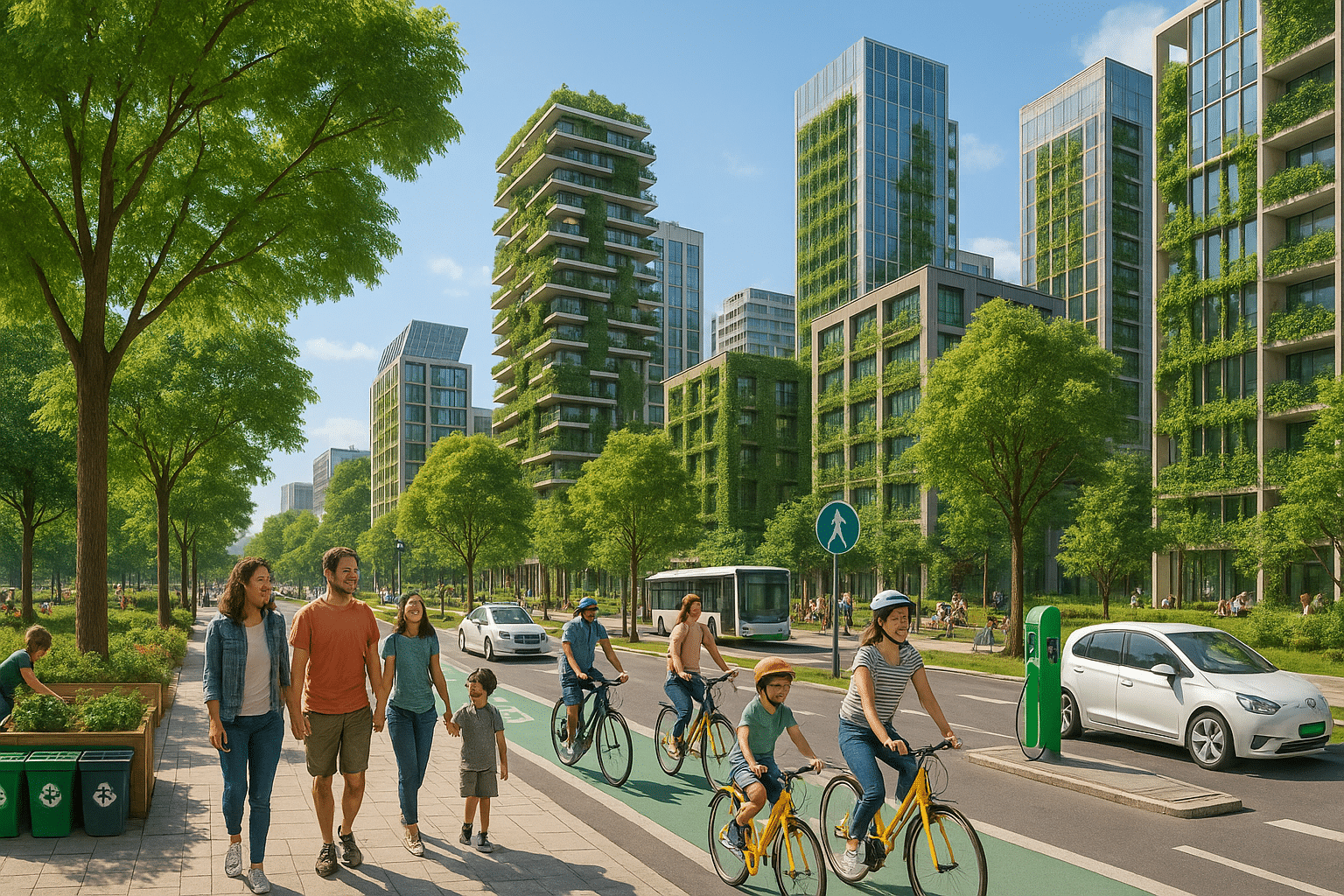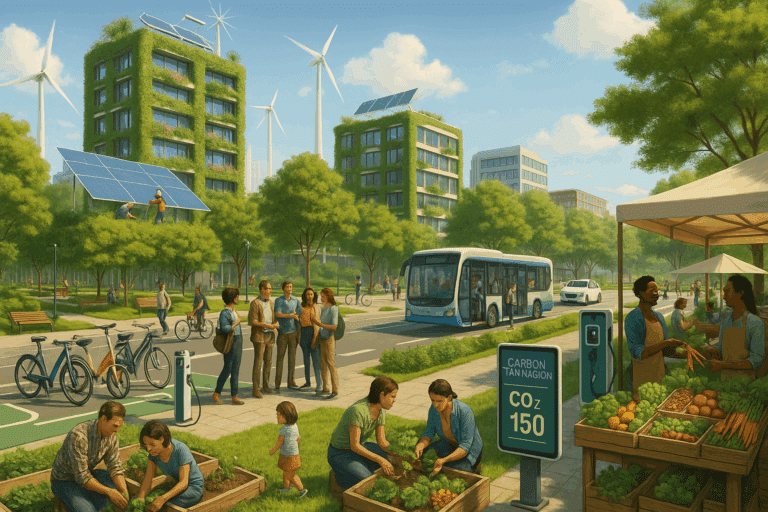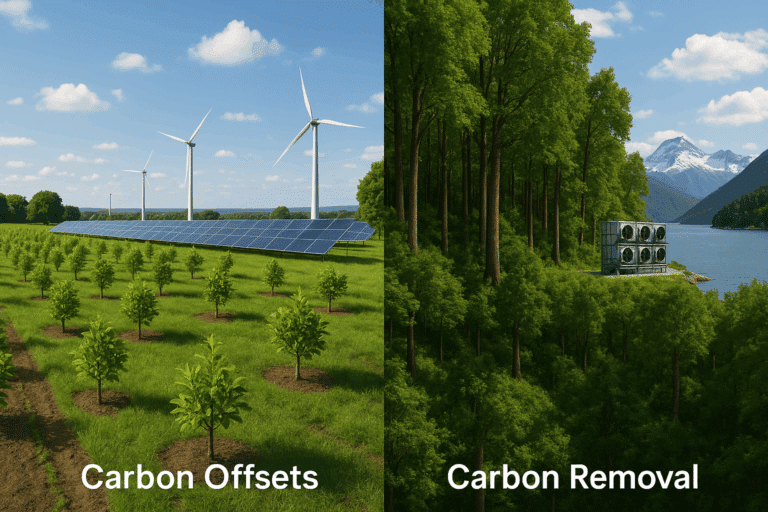The concept may seem daunting, even overwhelming, yet it is entirely achievable. This blog post aims to demystify the notion of behavioral change in relation to reducing emissions and its profound effect on our world.
What if I told you that the solution lies not in grandiose, multi-billion-dollar schemes, but in the habits and behaviors we exhibit daily? Yes, you heard right! The key 🔑 to a healthier, more sustainable planet lies in our hands, and more specifically, in our choices. Our article today revolves around how we can transform our impact through behavioral change to reduce emissions and save the planet.
The issue at hand is not a new one. Global warming and climate change have long been topics of discussion, especially in recent years. However, while most conversations revolve around government policies and big corporations, we aim to bring a fresh perspective. Today, we’ll focus on how individual and collective behavioral changes can contribute to a more sustainable environment.
Are you intrigued? 🧐 Good! Because we’ll delve into the fascinating world of behavioral change and its potential in reducing emissions. We’ll cover a variety of areas, from the significance of the individual’s role in emission reduction, to the collective influence of communities, businesses, and governments. So, buckle up, as we embark on this enlightening journey towards a healthier planet.
The first part of our discussion will introduce the concept of behavioral change and its relevance in the context of emission reduction. We’ll explore how changes in our daily routines, like how we commute, what we eat, and how we consume, can significantly reduce our carbon footprint.
Next, we’ll examine the collective role of communities and businesses in promoting behavioral change for emission reduction. From encouraging eco-friendly practices to implementing sustainable business models, we’ll delve into how their actions can make a substantial difference.
Lastly, we’ll discuss the critical role of governments and policies in fostering an environment that encourages and rewards emission-reducing behaviors. The influence of government policies on behavioral change cannot be overstated. From implementing carbon pricing to investing in renewable energy, governments have a crucial role in steering us towards a more sustainable future.
So, are you ready to discover how you can contribute to reducing emissions and saving the planet? Then read on! 🚀 Remember, every action counts, and your journey towards a more sustainable lifestyle starts here.
By the end of this read, you’ll not only gain a new perspective on the power of behavioral change, but also obtain practical tips and actionable steps that can help you reduce your carbon footprint. It’s time to transform our impact, one behavior at a time. Together, let’s make our home – Planet Earth, a healthier and safer place for us and future generations.
Understanding Our Climate Impact: The Role of Human Behavior
Climate change is one of the most urgent issues facing our planet today. Despite a wealth of knowledge on the subject, reducing our greenhouse gas emissions remains a significant challenge. This is where the role of human behavior comes into play. As it turns out, individual and collective behavioral changes can have a profound impact on reducing emissions and saving our planet. But how exactly does this work? In this in-depth article, we will explore the science behind this concept and delve into the practical steps we can take to bring about effective behavioral change.
As a starting point, let’s watch an informative video by YaleClimateConnections titled “Behavioral Science and Climate Change.” This video provides an excellent primer on the subject and underpins the importance of behavioral change in the fight against climate change. YaleClimateConnections – Behavioral Science and Climate Change
Remember, understanding is the first step to action. By understanding the mechanisms behind our behavior, we can more effectively steer our actions towards more sustainable practices.
The Psychology of Climate Action: Influencing Behavioral Change
The science of behavior change revolves around the understanding of why people behave the way they do and finding ways to encourage and facilitate positive change. Psychological and social science research has identified several factors that can significantly influence behavioral change. Among these factors are awareness, attitude, social influence, and the perceived difficulty of the change.
To better comprehend this, let’s examine a comparative table that illustrates some of these influences and how they can be leveraged to promote behavioral change in the context of climate action.
| Influence | Explanation | Application in Climate Action |
|---|---|---|
| Awareness | Knowledge and understanding of the issue | Educational programs, awareness campaigns |
| Attitude | Personal beliefs and feelings about the issue | Emphasizing the benefits of climate action |
| Social Influence | The impact of social norms and peer behavior | Creating a culture of sustainability |
| Perceived Difficulty | The perceived ease or difficulty of making the change | Making sustainable options more accessible and convenient |
For a more in-depth understanding of this subject, check out the video “The Psychology of Climate Action” by ClimateAdam. It delves into the psychological factors that drive our behavior and provides insights on how to leverage these factors to encourage climate action. ClimateAdam – The Psychology of Climate Action
Implementing Behavioral Change: Case Studies of Successful Initiatives
Now that we understand the theory behind behavioral change, let’s look at some real-world examples of successful initiatives. From city-wide recycling programs to corporate sustainability efforts, these case studies provide valuable insights into how behavioral change can be implemented on a large scale.
One such case study is the city of San Francisco’s recycling program. Through a combination of comprehensive education programs, strict regulations, and easy-to-use recycling systems, the city has achieved a recycling rate of over 80% – one of the highest in the world 🌎. This achievement illustrates the power of combining awareness, attitude change, social influence, and perceived ease of action to bring about significant behavioral change.
On the corporate side, IKEA’s sustainability efforts provide an excellent example. By integrating sustainability into their business model and product designs, IKEA has not only reduced their own environmental impact but also made it easier and more attractive for their customers to live more sustainably. This is a powerful demonstration of how companies can influence consumer behavior towards more sustainable practices.
For more examples and insights on this topic, I recommend watching the video “The Power of Behavioral Change: Lessons from Costa Rica” by World Economic Forum. This video provides an inspiring look at how Costa Rica has become a global leader in sustainability through a combination of innovative policies and behavioral change initiatives. World Economic Forum – The Power of Behavioral Change: Lessons from Costa Rica
Steps Towards Behavioral Change: What Can We Do?
The challenge of climate change can often seem overwhelming, but as we have seen, each one of us has the power to make a difference. By understanding the psychology behind our behaviors and taking steps to influence these behaviors, we can significantly reduce our carbon footprint and contribute to the fight against climate change.
So, what steps can we take to bring about this behavioral change? Here are some strategies:
- Education: The more we understand about the impact of our actions on the environment, the more motivated we are to make changes.
- Changing social norms: By creating a culture of sustainability in our communities, we can make environmentally friendly behaviors the norm rather than the exception.
- Make it easy: People are more likely to adopt new behaviors if they are easy and convenient. So, we need to ensure that sustainable options are easily accessible and simple to use.
To gain more insights into how to implement these strategies, watch the video “Behavior Change for a Sustainable World” by TEDx. It offers valuable advice on how to encourage behavioral change in our daily lives and in our communities. TEDx – Behavior Change for a Sustainable World
Remember, change starts with us. By taking action now, we can transform our impact and help to ensure a sustainable future for our planet. 🌍

Conclusion
In conclusion, we have examined in depth the key aspects surrounding the technical field of IT and engineering, particularly software engineering. This is indeed a vast and complex area, with multiple facets to consider, yet it is also a field that offers immense possibilities and rewards for those who are willing to delve deep and enhance their understanding.
From our exploration of the software development process, we have seen that it involves various stages, from requirement gathering and system design to coding, testing, and maintenance. We have discovered the significance of each stage and the crucial role they play in producing a software product that meets the needs of its users and can withstand the test of time 🕓.
We have also delved into the topic of software testing, discovering its importance in ensuring the quality and reliability of a software product. By testing software, we can identify and rectify any faults or bugs, thereby improving its overall performance and reducing the risk of failure.
Moreover, we have explored the concept of software engineering methodologies, learning about different approaches such as the waterfall model, the agile model, and the spiral model. Each methodology has its own unique features and benefits, and choosing the right one can significantly impact the success of a software project.
In addition, we have analyzed the role of a software engineer, shedding light on the vast array of skills and expertise required in this profession. We have learned that a software engineer not only needs technical knowledge and programming skills, but also problem-solving abilities, critical thinking, and communication skills.
Lastly, we have examined the future trends in software engineering, such as Artificial Intelligence (AI) and Machine Learning (ML), which promise to revolutionize the way we design and develop software, offering exciting opportunities for innovation and growth.
This article was designed to provide an in-depth understanding of the field of software engineering, breaking down complex concepts into simple, comprehensible terms. We hope that this knowledge will empower you to explore this fascinating field further and apply what you have learned in your own professional journey. We encourage you to share your thoughts and insights in the comments section below, and to share this article with others who might benefit from it.
For further reading, you may find the following resources helpful:
– [Software Engineering Institute](https://www.sei.cmu.edu/)
– [IEEE Computer Society](https://www.computer.org/technical-committees/software-engineering/)
– [Association for Computing Machinery](https://www.acm.org/special-interest-groups/sigs/sigsoft)
Remember, the world of software engineering is ever-evolving, and there is always something new to learn. So, keep exploring, keep learning, and keep pushing the boundaries of what is possible with software 💡🚀.
As we close, remember: “The only limit to our realization of tomorrow will be our doubts of today.” – Franklin D. Roosevelt
In the words of the software guru, Grady Booch, “The function of good software is to make the complex appear to be simple.” Let’s strive to make the complex simple, and to create software that not only solves problems, but also inspires and delights.
Until next time, happy coding! 👨💻👩💻👋



